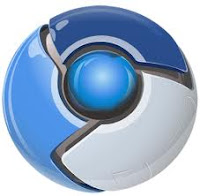Google's Chrome project aka Chromium runs for their Chrome Browser and Chrome OS. Loving its browser, I thought of checking out the OS.
Downloading image
Google Chrome OS, is available only via their partnered OEM's hardware. Hence to try out, how it looks and what's the experience, I started googling around. Chromium OS & Google Chrome OS, share same code base with an exception of later having additional packages to ensure better experience on its partnered OEMs hardware. Chromium OS can be downloaded, compiled & executed. Avoiding all that tricky steps, I looked for readily available image.
Though not much of information available, but whatever available; all pointed towards hexxeh. They seem to be checking out latest version of Chrome OS available on public domain, build it & release a installable image for end consumers.
Installation
Downloading image
Google Chrome OS, is available only via their partnered OEM's hardware. Hence to try out, how it looks and what's the experience, I started googling around. Chromium OS & Google Chrome OS, share same code base with an exception of later having additional packages to ensure better experience on its partnered OEMs hardware. Chromium OS can be downloaded, compiled & executed. Avoiding all that tricky steps, I looked for readily available image.
Though not much of information available, but whatever available; all pointed towards hexxeh. They seem to be checking out latest version of Chrome OS available on public domain, build it & release a installable image for end consumers.
Installation
- I started with its Vanila variant.
- Downloaded & copied image to the USB drive through image writer.
- Plugged USB in to my old HP Laptop (running with 512 MB RAM, Intel Pentium Dual Core processor).
- Booted computer from USB. Saw Google Chrome's logo with text 'Chromium'. Got excited !!!
NOTE: Google Chrome OS has green/yellow/red logo, while chromium OS has blue/bluer/bluest logo. - After few minutes, saw initial screen asking for KeyBoard Language, Network connectivity.
NOTE: Unless, I connected ethernet cable, I could not proceed. For some reason WiFi option was not available. - Next step to configure Google Account. I gave my existing Google account credentials and it started syncing contents.
NOTE: For security reasons, secondary encryption password is prompted before sync can be performed (which can be found in google account dashboard). - Upon syncing & configuring, I was asked to select my logic profile picture (It also pulled up my Google+ profile image).
Experience
Applications installed on Chrome Browser (via Chrome browser App Store) popped up as my applications on the machine. All most all this applications works in browser & hence they worked here equally well. I do not have that many applications installed to have detail analysis on the same.
File Manager: File manager is part of the browser, where all files are visible. UX looks very similar to Google docs listing all files in a collection.
Printer: Printer on cloud. I haven't tried it, so can't comment.
Settings: Could see Ethernet, WiFi, Keyboard, trackpad settings. Again not as a separate application, but all under Chrome Browser page.
Other Info: I could see my computers battery status in bottom right corner. Could not see other hardware or similar details.
Summary
Honestly, as this was not an official Google Chrome's OS image; but a similar variant - It gave me a basic feel of what the OS is all about. An operating system, with a home page and all applications hosted (or embedded) in a browser. Data pulled from my cloud services and processed locally (where-ever applicable). Certain services have support for offline data availability to ensure work continuity especially when no or limited internet connectivity.
Google's official Chrome OS, has pre-bundled extended package like Adobe Flash, Adobe PDF, Google Talk client, 3G Cellular support, etc; which makes the entire OS better.
For users, who can get their all major work done on a browser (Mail, Doc processing, Financial, Image & Video Processing), it seems to be a good option. But hold on - Do one really needs to buy a new hardware for this? May not be... We all use browser in our regular laptop / tablets. Then why a new hardware? May be a trimmed version of hardware like a tablet or ultra books seems to be a good fit.
I'll definitely look forward to use ChromeBook soon.
